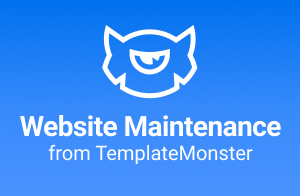
How to Speed up Elementor
Last modified: March 8, 2023
Website speed is one of the most important aspects of running a website. For every second that it takes your website to load, the revenue on your website can drop by 7%. In addition, slower websites tend to rank lower on search engines than websites with more speed.
Elementor is not one of the best for speed. So in this article, we look at some of the options on how to speed up Elementor.
* This button will show the rest of the post and open up an offer from a vendor
1. Choose a Better Host/Hosting Solution
If you’re using a shared or VPS hosting system, you might need to move to a cloud hosting system. The cloud allows for a better speed than a VPS system. If you’re on a shared server, get onto a VPS as soon as possible, you will get much better performance, no matter the size of your website.
2. Activate Elementor Experiments
Elementor Experiments are options that aren’t fully released yet but are there to improve the performance of websites. To activate Elementor Experiments, you need to go to the Settings option in Elementor and then click on the Experiments tab. Some of the options that you have to include:
- Optimized DOM Output
- Improved Asset Loading
- Inline Font Icons
- Improved CSS Loading
3. Remove Elementor CSS and JavaScript
Excess CSS and JavaScript can slow down your website. These code snippets can be on any part of your website, including Elementor, plugins and others not associated with Elementor. Since many core web vitals relate to CSS/JS, it is a priority to optimize these files.
Replacing low-performance extensions and plugins with more lightweight options is the first step. It is obvious, but not often used.
Another option is to use the ‘Remove Unused CSS’ feature found in cache plugins or Perfmatters.
4. Optimize Images
Images can slow down your website. However, it is really easy for you to optimize them so they take up less memory. To do this, you can use third-party software like RIOT or you can use a plugin. Images should also be displayed on a website in the right format and size. You don’t need images that are any larger than 600 pixels in most cases.
5. Host Fonts Locally
You can activate fonts locally by going to your theme customizer options and then looking for ‘Performance’. This will load Google Fonts locally and preload them.
6. Don’t Use Too Many Elementor Plugins
One key focus should be on having only what you need. If you don’t need an Elementor plugin, then you can get rid of the plugin. It will free up code on your website that will be removed and as a result, your website will speed up.
Do a monthly check. Are you using the Elementor plugin or not and then removing it if not?
7. Use a Better CDN Configuration
Ensure that you’re using a CDN that is optimized for delivering content to your users. There are a lot of options out there that can help you. Research the market and ensure that you also configure the CDN better so it offers speed, not just convenience.
Final Word: How to Speed up Elementor
Above are the options on how to speed up Elementor. These are simple to apply, but they aren’t the only options that you might need. You need to consider also what your website needs and how much of a performance boost your website will have.


 Website Maintenance – Use Promocode: scanwp
Website Maintenance – Use Promocode: scanwp  Advanced JetPlugins for Elementor
Advanced JetPlugins for Elementor  Semrush 14 days trial
Semrush 14 days trial  Kinsta – Managed WordPress Hosting
Kinsta – Managed WordPress Hosting  Bluehost Hosting
Bluehost Hosting